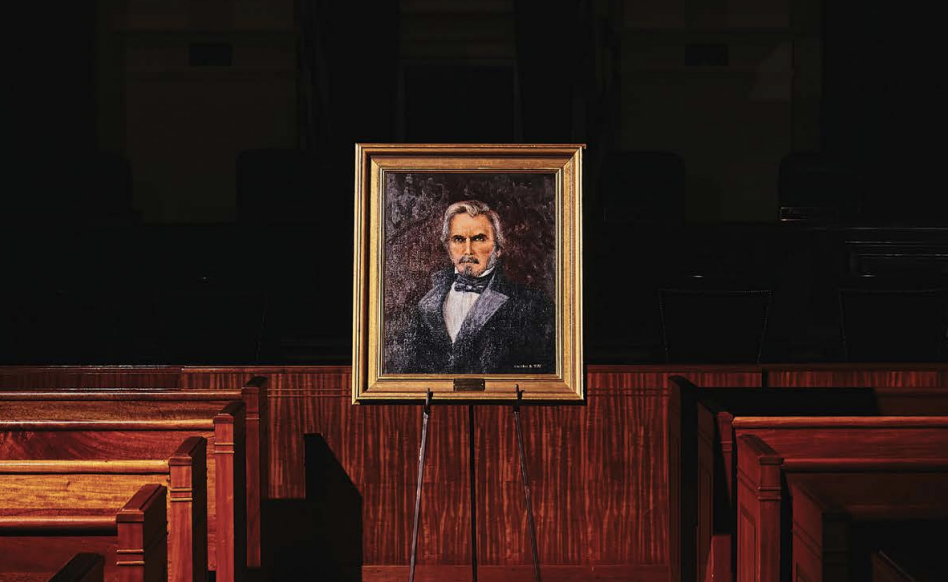
Imaginary photo of Justice Macrae as no actual photograph or portrait of him has ever been identified, wrote Cutler.
By Jim Ash
Florida bar.org
A South Florida personal injury lawyer turned history detective has solved one of the Florida Supreme Court’s most enduring mysteries – who was Justice George W. Macrae?
For decades, almost nothing was known about Florida’s fourth justice, other than his abbreviated court tenure in 1847 and appointment by President John Tyler as U.S. attorney for the Southern District of Florida in 1842.
That was until recently, when Parkland Vice Mayor Kenneth A. Cutler, a founding member of Cutler Rader, visited the Supreme Court website and clicked on the biographies of former justices.
“I was shocked when I read that they knew nothing about this guy,” Cutler said. “I said to myself, how could that be?”
Cutler was even more confounded when he learned Justice Macrae’s “official” portrait in the Supreme Court gallery is “entirely imaginary.”
“There is no evidence of the date and place of his birth or of his family history,” the court biography confessed. “No actual photograph or portrait of him has ever been identified.”
Justice Macrae didn’t fade into Florida history; he vanished almost as suddenly as he appeared.
“Macrae’s activities after leaving the court are as uncertain as his origins,” the biography asserted.
No longer.
The full story of Justice George Wallace Macrae is now revealed in a cover article Cutler wrote for the Fall/Winter edition of the “Florida Supreme Court Historical Review Magazine.”
From his birth in Virginia’s Prince William County in 1802 to his tombstone in Christian County, Kentucky, Justice George Wallace Macrae’s life can now be traced in comparatively rich detail.
The portrait that emerges is of a circuit-riding lawyer and jurist, pro-slavery politician, militia captain, and newspaper publisher with an adventurous spirit.
“To be a circuit rider in the 1840s in Florida, which wasn’t even a state yet, you had to be an adventurous person,” Cutler said. “Anything could happen, considering the state of travel in those days and the state of medicine in those days.”
Cutler’s first break in the case came when he found a newspaper article that mentioned Justice Macrae was boarding a ship bound for California around the time of the Gold Rush.
“He disappears around 1849, and I was thinking, what else was going on around 1849 at that time?” Cutler said. “They called people ‘49ers’ for a reason.”
In addition to his legal training, Cutler was able to draw on his talents as a crackerjack amateur genealogist, a skill he has been honing since he first researched his family history as a preteen.
It’s a talent he enjoys sharing.
“From time to time, I have been known to do these things I like to call ‘random acts of genealogical kindness,’ to sort of help people out with their family tree,” Cutler said.
Cutler has made presentations for local historical societies in South Florida and campaigned to name a section of Davie Highway “Rubin Stacy Memorial Boulevard” in honor of a 1935 lynching victim.
But the magazine article is a first, Cutler said.
“This is the first time that I’ve published anything with this kind of weight,” Cutler said.
Historical_Review_FallWinter2021-web
This article was reprinted with permission from the Florida Bar.
Send your news to Parkland’s #1 news source, Parkland Talk.













